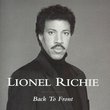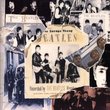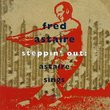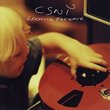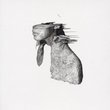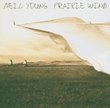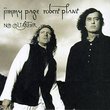| All Artists: Trey Anastasio Title: Horseshoe Curve Members Wishing: 2 Total Copies: 0 Label: Red Int / Red Ink Original Release Date: 1/1/2007 Re-Release Date: 7/24/2007 Genres: Alternative Rock, International Music, Jazz, Pop, R&B, Rock, Classic Rock, Latin Music Styles: Africa, Caribbean & Cuba, Cuba, Mambo, Rhumba, Latin Jazz, Modern Postbebop, Bebop, Funk, Jam Bands, Rock Jam Bands, Progressive, Progressive Rock, Latin Pop, Tropical, Salsa Number of Discs: 1 SwapaCD Credits: 1 UPC: 800314898825 |
Search - Trey Anastasio :: Horseshoe Curve
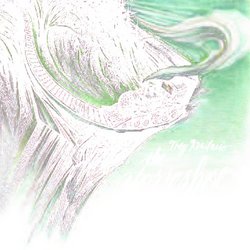 | Trey Anastasio Horseshoe Curve Genres: Alternative Rock, International Music, Jazz, Pop, R&B, Rock, Classic Rock, Latin Music
|
Larger Image |
CD DetailsSimilarly Requested CDs
|
CD ReviewsIt's not Phish Gustavo | Baton Rouge, LA | 08/09/2007 (5 out of 5 stars) "If you're expecting Phish, don't buy this album. Much like Seis de Mayo, this is an album that features Trey's ability for music composition and arrangement. Any true phan will tell you most of Trey's post-breakup releases have been sub par. But this one is actually worthy of a 5 star rating. If you liked Seis de Mayo, you will probably like this album. If you're expecting Phish, you won't like this. If you're expecting Trey's signature guitar solos, don't buy this album. If you're expecting a jam session with former Phish members who happened to show up at the studio, don't buy this album." This review brought to you by the letters F, U, N, K, and so eleventy-one | 08/10/2007 (5 out of 5 stars) "Trey Anastasio's website describes the instrumental album "The Horseshoe Curve" as having an Afro-Cuban influence. This style has apparently been an influence on much of Trey's previous work, too, including Phish. I'm not familiar with Afro-Cuban music, being held hostage by American popular culture for most of my life, but one thing is certain... toe tapping is a universal impulse! Something about this album has grabbed me. Listening to it, I am immediately reminded of "Carlos Santana & Buddy Miles: Live!" or of James Brown's "Love Power Peace" (both of which I highly recommend). It's as if those two cds were sitting on a dashboard, melted together, and somehow erased of all vocals. They are probably the closest things to "The Horseshoe Curve" in my dusty stacks of cds, but undoubtedly Trey's influences go way deeper. The foundation of "The Horseshoe Curve" includes hypnotic bass lines and endless layers of percussion. Trey and his guitar act as an equal member to the band heavy with horns, flute, and keyboards. The songs contain funky melodies with improvisational jams over, under, and in-between. Performed in common time, much of the music is instantly accessible. Tempos vary and there are elements of swing throughout. The playing is flawless, yet paradoxically has a very loose, one-take type of feel. This is typical of most music Trey has been involved with and it's always appealing. One thing must be said; this album is not always a showcase for electric guitar. The instruments best suited for the given parts are the ones that were chosen. Sometimes the guitar is buried deep in the mix, used only for subtle effect. Often, it's used as a rhythm instrument. The guitar does take a significant share of lead melodies and improv solos though, and Trey's signature digital delay has definitely not yet been stomped to death. Only the brief final track, "Porters Pyramids," contains no guitar at all. The album's pinnacle, in my opinion, begins on the fourth track, "The 5th Round." Trey seems to channel the upside-down Strat and fuzzbox and Marshall stacks of the immortal Jimi for five-minutes of feedback, wah-wah, and delay. The fury eventually transitions neatly into "The Horseshoe Curve," which contains more-subdued sounds and showcases a rather mean jazz flute. This title track builds slowly, through the addition of instruments and oomph, and Trey mimics and accompanies the flute before bringing back just a hint of the guitar from the previous track. There is a tasty piano solo and eventually a fade. Throughout these two tracks, an audience can be heard, but the liner notes read that the album was recorded in Brooklyn's "Trout Recording" and in Trey's studio, "The Barn." Perhaps the starting point for the two songs was part of a recorded show, or perhaps the sound of the audience was added in for effect. It doesn't matter; whatever Trey did, it works. Other highlights are the fantastic sax solos in "Noodle Rave" (what sounds like tenor and alto) and especially in "Burlap Sack & Pumps" (bari and tenor). The funky track "Tube Top Tony," with its catchy guitar melody and key changes, does it for me every time, too. Listening to the album with headphones reveals a lot of tiny details... percussion, unidentifiable sounds, even voice. Often, repeated listening is required to fully absorb and appreciate the album's many quirks. It should be assumed that not all fans of Phish will enjoy "The Horseshoe Curve," but it strangely sounds very much like something Phish could have done. Put down the air guitar for a bit, it's time to learn air trumpet!" I'm not sure why people say it's so un-Phish-like Sam | 03/02/2008 (5 out of 5 stars) "Everything Trey has done post-Phish is either more straight-ahead rock like his old writing partner, Tom Marshall, tends to do with his band, Amfibian, or it is exploring the territory Phish often dipped into, which is funky jazz. While his stripped-down rock efforts have left me pretty unenthralled, this album sounds like a very inspired 2nd set of a focused Phish. Think "cowfolk" era Phish with a heaping of Giant Country Horns. Now, imagine if the Giant Country Horns were always on point and in tune and imagine if the funky jams weren't completely pulled out of their butt at the spur of the moment.
It is not for nothing that Phish fans have said, "THIS is the Trey album we've been waiting for" while at the same time damning the timing (Trey's unable to tour at the moment since he is in a rehabilitation program). This is Trey (and, sort of, Phish) at his creative height. Not that he hasn't been at his creative height before, of course. It's kind of great that there are no lyrics, too. This is very 60s and 70s drugged-out jazz music. At times it sounds like some of the heavier Miles Davis albums. At times it reminds me of the instrumental passages explored by Jerry Garcia and Merle Saunders in Legion of Mary. At no time does it sound like "filler" where nobody is really sure of where the song is going to go. Chalk that up to Trey working with a really tight jazz band that knows their stuff. This wouldn't have really been possible in Phish. So, while it is very much like Phish (and some of the best aspects, too, I might add), it is not something Phish would have ever done. Part of that reason is because the horn section is so great and so dominant throughout. Giant Country Horns were great and people always wanted more Giant Country Horns when Phish was touring. Perhaps that is why fans have been saying, "this is the Trey album we've been waiting for!"" |

 Track Listings (8) - Disc #1
Track Listings (8) - Disc #1
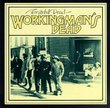
![Sly & the Family Stone - Greatest Hits [Epic]](https://nationalbookswap.com/cd//m/63/8263/18263.jpg)
